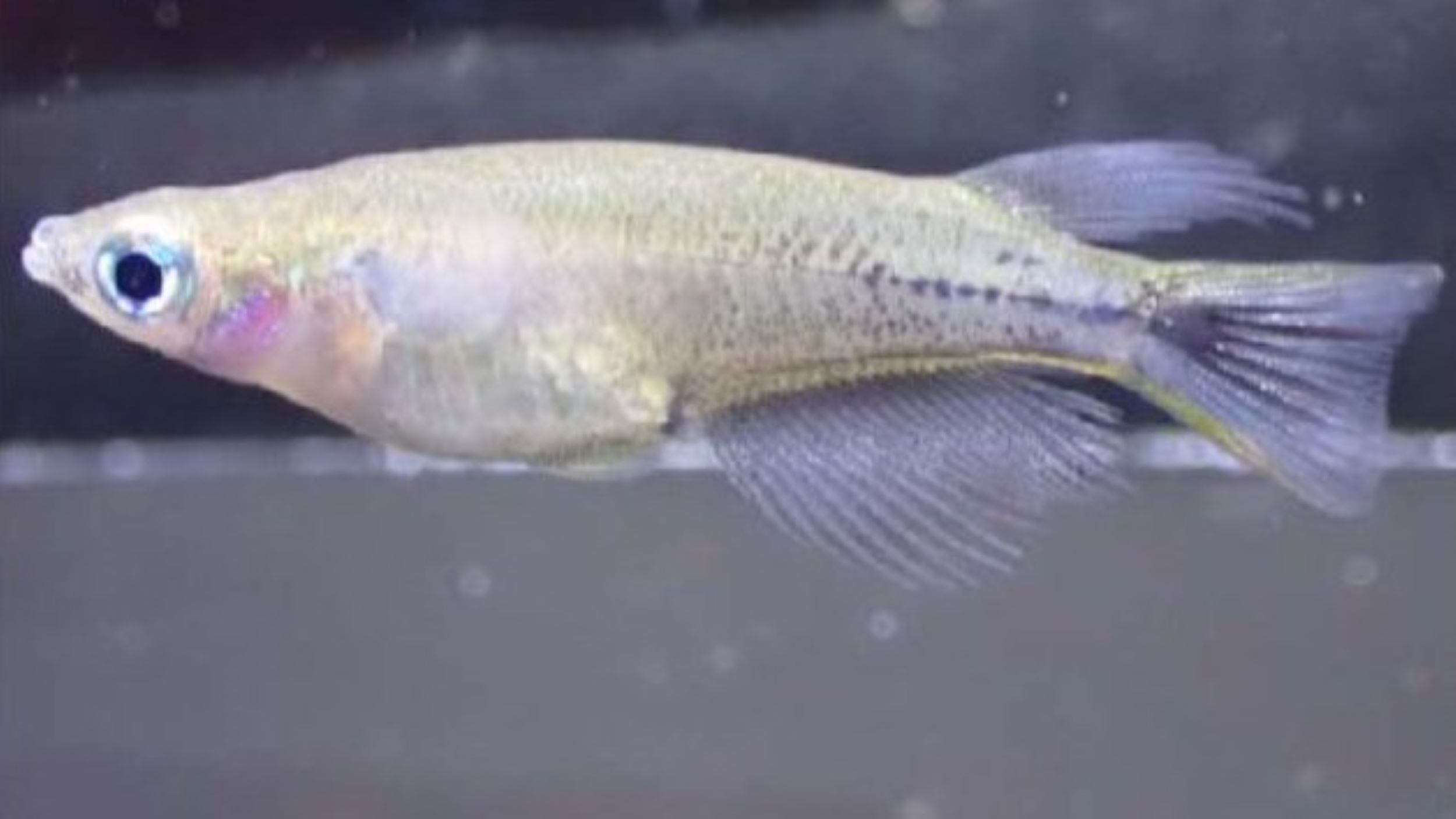
Dominant males of an Indonesian species of fish turn black during periods of heightened aggression, scientists have discovered. Their blackened markings, which quickly emerge at the start of a conflict, appear to serve as a signal of dominance to other fish.
Celebes medaka (Oryzias celebensis) males with these distinctive black markings were more likely to attack and less likely to be attacked, researchers reported on Dec. 24, 2023 in the preprint repository BioRxiv. The markings appeared within a minute of the onset of a conflict.
To test the conditions under which males darkened in color, the researchers set up three tanks. Two tanks were covered with algae — one of which contained two males and a female, and the other three males. The third tank contained no algae and housed two males and a female.
The fish attacked each other in both algae-covered tanks but not in the other tank, suggesting that some level of cover might be required for them to feel secure enough to launch an attack.
Males with dark markings concentrated their attacks on other dominant males with similar markings, but they also attacked females and males without dark markings. While males without dark markings rarely attacked males with dark markings, they did attack other males without dark markings and females.
Related: Nightmarish deep-sea footballfish washes up on California beach in rare stranding
Females mostly concentrated their attacks on males without dark markings. Males with dark markings were more likely to attack females.
The attacks against females suggest that the dominance displays may be more about access to territory and resources than mating rights.
"I don't think there's any reason to expect color change-based signals should be any more sex specific than other forms of communication, in which case this becomes a question about whether aggression itself, and thus its communication, is often sex-specific," Robert Heathcote, a biologist at the University of Oxford, told Live Science. Heathcote, who was not involved with the research, has worked on color signaling in fish.
The authors suggest these dark markings may signal physical fitness, meaning females and males without the markings may be less likely to engage in protracted disputes that they are unlikely to win. Dominant males also have to expend less energy defending their resources thanks to this warning signal.
While the researchers did not conduct analysis to determine the mechanisms behind the color change, in other fish species similar changes are facilitated via the action of neurotransmitters on cells that contain granules of pigment. When the pigment is concentrated in the cells, the coloration appears more intense. When it is dispersed, coloration appears lighter.
In the case of the medaka, the cells are likely melanophores, which contain granules of dark color known as melanosomes.
This color change phenomenon is seen in other fish species too. In Trinidadian guppies (Poecilia reticulata), the eyes of dominant fish turn black when they are preparing to attack a rival.
"We know that adrenaline can often stimulate melanophores, but not always in the direction of dominant animals becoming darker," Heathcote observed. "In fact, it's often the reverse in many fish: bullied individuals will often darken considerably, particularly when hiding, which might be linked to camouflaging themselves from further attacks."
In oscars (Astronotus ocellatus), the appearance of black bars suggests submission rather than dominance. Similarly, in juvenile Atlantic salmon (Salmo salar), the whites of the eyes of subdominant specimens turn dark under experimental conditions.
"The speed of colour change is controlled by lots of factors, but probably the most important ones are whether it is controlled by direct neural stimulation, hormonally, or by actual production of new pigments," Heathcote said. "In fish and cephalopods, there is often direct neural innervation" of cells, meaning their color change can happen in seconds.







